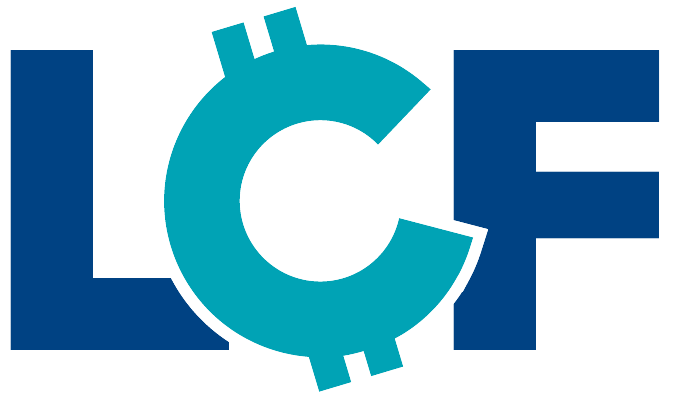The Pros and Cons of Equipment Financing for Small Businesses
Lets Get Started
As a small business owner, acquiring the right equipment is essential for your enterprise’s smooth operation and growth. Equipment financing is a popular option to help businesses acquire the necessary new equipment without having to pay the full amount upfront. In this blog post, we will explore the pros and cons of equipment financing for small businesses to help you determine if it’s the right fit for your needs.
What is Equipment Financing?
A business equipment loan is a type of financing where the borrower receives a lump sum to purchase the equipment. The borrower then makes monthly payments to repay the loan, usually with a fixed interest rate. Unlike other small business loans, business equipment financing typically requires the entire loan amount to be used on an agreed-upon piece of equipment with little to no flexibility.
The borrowing business will typically need to provide a down payment of around 20% in order to receive the loan. And on top of that, the lender holds the equipment as collateral; if the borrower is for some reason unable to repay the loan, the lender will repossess the equipment and sell it.
Nearly every business requires equipment purchases. Most businesses require a combination of office furniture, equipment, fixtures, software, vehicles, machinery, POS systems, security systems, and specialty equipment.
On top of that, many industries require a specialized piece of equipment:
Restaurants
Kitchen equipment: Restaurant businesses can use equipment loans to purchase essential kitchen appliances, such as ovens, stoves, and refrigerators, to ensure efficient food preparation and storage.
Dining furniture and fixtures: Equipment loans can be used to buy tables, chairs, and other furnishings to create a comfortable and inviting dining atmosphere.
Point of sale (POS) systems: Restaurants can invest in modern POS systems to streamline order taking, payment processing, and inventory management.
Trucking Companies
Trucks and trailers: Trucking companies can use equipment loans to purchase new or used trucks and trailers to expand their fleet and meet increasing demand.
Maintenance and repair equipment: Equipment loans can help trucking businesses acquire specialized tools and equipment required for maintaining and repairing their fleet.
GPS and tracking systems: Trucking companies can invest in GPS and tracking systems to optimize routing, monitor fleet performance, and enhance overall operational efficiency.
Retail Businesses
Store fixtures and displays: Retail businesses can use equipment loans to purchase shelving, display racks, and other store fixtures to showcase their products effectively.
Point of sale (POS) systems: Equipment loans can help retailers invest in modern POS systems to streamline sales, inventory management, and customer data tracking.
Security systems: Retail businesses can use equipment loans to invest in security cameras, alarms, and other loss-prevention equipment to protect their inventory and assets.
Pros of Equipment Financing for Small Businesses
1. Preserve Cash Flow
One of the most significant advantages of equipment financing is that it allows small business owners to preserve their cash flow. By financing equipment, businesses can avoid large upfront payments and instead make smaller, more manageable monthly payments. This helps maintain a healthy cash flow, which is essential for covering day-to-day expenses and investing in growth opportunities.
2. Access to High-Quality Equipment
Equipment financing enables small businesses to access high-quality, cutting-edge equipment that they may not have been able to afford otherwise. This can help improve productivity, efficiency, and competitiveness.
3. Tax Deductions
Equipment financing may also offer tax benefits for small businesses. In many cases, the interest paid on equipment loans or lease payments can be tax-deductible as a business expense. Additionally, businesses may be able to take advantage of Section 179 tax deductions, allowing them to deduct the full cost of qualifying equipment in the year it was purchased.
4. Flexible Financing Options
Various financing options are available for equipment financing, including traditional banks, credit unions, online lenders, and equipment manufacturers. This means that small businesses can shop around to find the best interest rates, loan terms, and repayment options that suit their specific needs.
Cons of Equipment Financing for Small Businesses
1. Higher Overall Cost
One of the main drawbacks of equipment financing is that it can lead to a higher overall cost when compared to purchasing the equipment outright. This is because interest payments and other financing fees can increase over time.
2. Collateral and Personal Guarantees
Equipment financing often requires the equipment being financed to serve as collateral for the loan. This means that if a business defaults on the loan, the lender can repossess the equipment. Additionally, some lenders may require a personal guarantee from the business owner, which puts their personal assets at risk in case of default.
3. Impact on Credit Score
Taking out an equipment loan can impact the credit score of both the business and the owner, especially if the business has limited credit history. A lower credit score can make it more difficult to obtain additional financing in the future.
4. Equipment Depreciation
As with any asset, the equipment can depreciate over time, meaning it loses value as it ages and becomes obsolete. This can be a disadvantage for businesses that finance equipment, as they may end up paying for equipment that is no longer as valuable or useful as it once was. However, equipment leasing can help mitigate this issue, as the lessee can return the equipment at the end of the lease term and acquire newer, more advanced equipment.
5. Limited Flexibility with Leasing Agreements
While equipment leasing can offer certain advantages, it may also have some limitations. Some leasing agreements may restrict equipment use, modification, or customization. Additionally, breaking or terminating a lease early can result in penalties and fees, which can be costly for a small business.
Factors to Consider When Choosing Equipment Financing
Before deciding on equipment financing, small business owners should consider the following factors:
1. Assess Your Business Needs
It’s essential to thoroughly evaluate your business needs before committing to equipment financing. Consider the type of equipment required, how long you expect to use it, and whether it’s more cost-effective to purchase or lease the equipment.
In addition, consider whether you’re an established business or a new business startup. Are you upgrading an existing piece of equipment, or are you just getting started with your company? Is your credit stellar, or do you have bad credit?
Knowing where your business stands and what it needs helps ensure you’re financing that equipment correctly.
2. Compare Financing Options
Shop around and compare financing options from various lenders and alternative funders to find the best factor or interest rates, and repayment options. Remember that while banks may offer lower interest rates, they can also have stricter eligibility requirements. Online funders and credit unions may be more flexible and willing to work with businesses with limited credit history or lower credit scores.
And in addition to equipment financing, there are a number of other equipment financing options available to entrepreneurs:
Business lines of credit: A flexible financing option allowing businesses to draw funds up to a predetermined credit limit as needed. It can be used for various purposes, including equipment purchases, and interest is only charged on the amount utilized.
Term loans: A lump sum of capital provided by a lender, to be repaid over a fixed term with regular payments. Term loans can be used for equipment purchases and offer fixed or variable interest rates, depending on the lender and borrower’s creditworthiness.
Small Business Administration (SBA) loans: SBA loans are designed to help small businesses obtain financing. These loans can be used for various purposes, including equipment purchases, and offer competitive interest rates and longer repayment terms.
Merchant cash advances: MCAs are not loans. Instead, an MCA is a financing option where businesses receive an upfront sum in exchange for a share of future revenue. This can be used for equipment purchases. It should also be noted that MCAs move very quickly: you might be able to receive your funding in a single business day. If equipment breaks down, an MCA can help you replace it immediately.
Equipment leasing: Instead of purchasing the equipment outright, leasing equipment allows businesses to make monthly payments to the leasing company. At the end of the lease term, businesses can choose to purchase the equipment, return it, or upgrade to newer equipment.
Business credit cards: Some businesses choose to finance smaller equipment purchases using business credit cards. This can provide flexibility and rewards, but businesses should be cautious of high interest rates if they cannot pay off the balance quickly.
3. Understand the Terms and Conditions
Before signing any financing agreement, make sure to thoroughly read and understand the terms and conditions. This includes the interest rate, repayment terms, any fees, and potential penalties for early repayment or breaking a lease.
Conclusion
Understanding how equipment financing works is vital when thinking about finance options. Equipment financing can be a valuable tool for small businesses looking to acquire the necessary equipment for their operations. It offers several advantages, including preserving cash flow, accessing high-quality equipment, tax benefits, and flexible financing options. However, it’s essential to weigh the cons, such as higher overall costs, collateral requirements, impact on credit scores, equipment depreciation, and limited flexibility with leasing agreements. By carefully assessing your business needs and comparing financing options, you can make an informed decision that best suits your small business’s unique circumstances.




